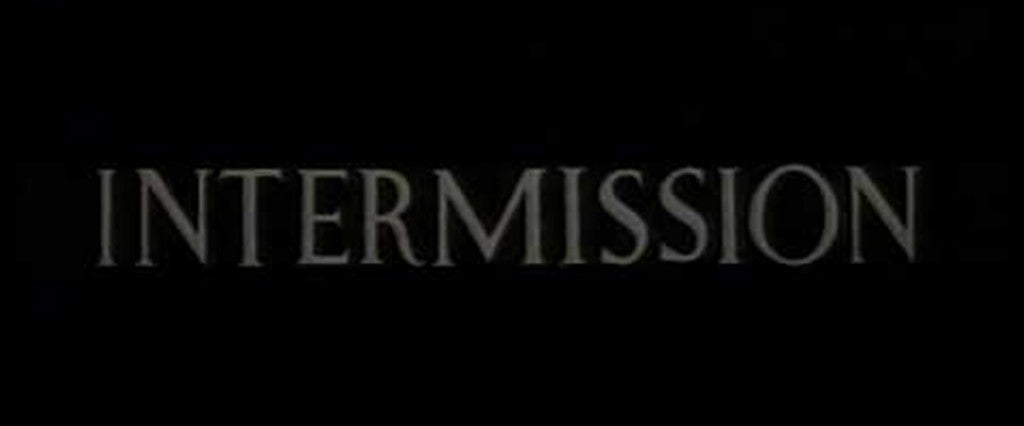Say goodbye to physical media: This year, digital streaming will finally replace DVD sales as Hollywood’s biggest source of home-entertainment revenue, closing the door on 30 years of consumers being able to buy films in a format they could hold, such as a VHS tape, laserdisc or Blu-ray.
New technologies don’t just make old ones obsolete, though — they relegate previous ways of interacting with a movie to the dustbin of history. This is certainly true with the commercial VHS tape, which (because it could only hold, at most, two-and-a-half hours of material) necessitated that longer films be broken up onto two tapes. The cinematic equivalent of the vinyl record or cassette, the double-VHS collection created a sense of an A and B side to entertainment, requiring viewers to get up and change tapes, often at the height of a dramatic moment.
Nowadays, the closest we have to this between-tapes cliffhanger is the end of a random episode of a show we’re binge-watching on Netflix. But in that case, the writers have predetermined where the breaks will occur. With the double-VHS tape, however, that transition can be jarring or simply confusing. But because it was often an artificially-imposed pause in the action, it creates a new way of thinking about a movie that perhaps you’ve seen dozens of times.
The clunky, black rectangular-shaped monstrosity that was the VHS tape fell out of favor in Hollywood years ago. (In fact, the last major studio movie to be available on VHS was 2005’s A History of Violence.) But plenty of them still pop up on eBay for ridiculously cheap. So we at MEL decided to shop around, sampling 10 of the most memorable two-tape movies to see how they hold up, and whether Tape One or Tape Two is actually the better cinematic experience. We’ll start with Scarlett O’Hara and work our way up to the movie that made Leonardo DiCaprio a superstar.
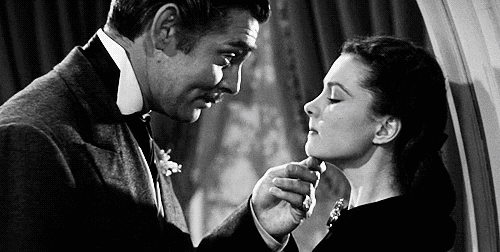
‘Gone With the Wind’ (1939)
Length of film: 238 minutes
How much is it on eBay? $5
Where does the first tape end? The South is about to lose the Civil War, and the Tara plantation has been gutted.
Final line of dialogue on the first tape: Only one of the most famous monologues in all of film history, as Scarlett declares, “As God is my witness, as God is my witness they’re not going to lick me. I’m going to live through this and when it’s all over, I’ll never be hungry again. No, nor any of my folk. If I have to lie, steal, cheat or kill. As God is my witness, I’ll never be hungry again.”
First line of dialogue on the second tape: “Oh, my back’s near broken!” (That’s Suellen, played by Evelyn Keyes, complaining about working the fields.)
How jarring is it when the first tape ends? The two tapes are divided exactly where the original theatrical release featured an intermission. You’ll want to take a break before Tape Two to collect yourself after everything that happened in the first section.
Which tape is better? A tough call, but the second tape wins. Though the first tape is more action-packed with the Civil War raging, the second half better encapsulates the film’s legacy: the doomed, melodramatic love story between Scarlett and Rhett. What’s often forgotten: When Rhett at last walks out on Scarlett, he’s in the right, her own shortsightedness finally coming back to haunt her.
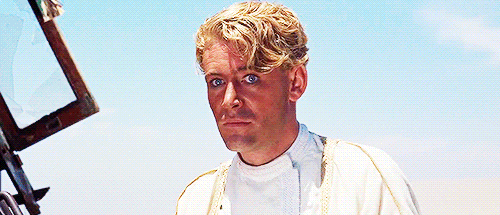
‘Lawrence of Arabia’ (1962)
Length of film: 227 minutes
How much is it on eBay? $3.49
Where does the first tape end? British General Allenby (Jack Hawkins) and a diplomat known as Mr. Dryden (Claude Rains) are discussing Lawrence’s (Peter O’Toole) progress in Arabia. Allenby had previously promised Lawrence that he would arm Lawrence’s Arab army, but now he’s reneging on that promise, not wanting Lawrence’s men to get any ideas of becoming independent.
Final line of dialogue on the first tape: “He’s riding the whirlwind,” Allenby says of Lawrence. “Let’s hope we’re not,” Dryden responds.
First line of dialogue on the second tape: “Excuse me, friend, who do these bags along to?” (Spoken by American journalist Jackson Bentley, played by Arthur Kennedy.)
How jarring is it when the first tape ends? Not very! The tapes are divided right along the theatrical intermission, which makes Tape One end on an intriguing cliffhanger: What will Lawrence do now that he’s become a Middle East legend
Which tape is better? The first one. You could even make the case that the first, longer half of Lawrence of Arabia could work perfectly fine as its own complete movie, charting Lawrence’s course from feckless soldier to revered leader. Of course, the second tape examines how Lawrence’s ambition and ego get the better of him — it’s the dark, opposite side of the coin to this hero’s journey — but the film isn’t nearly as compelling in its final stretches.
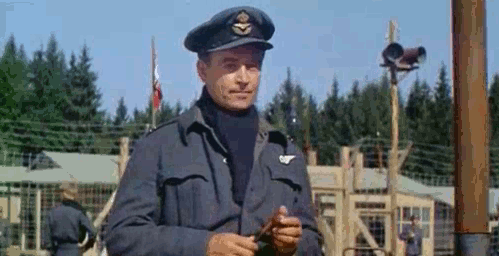
‘The Great Escape’ (1963)
Length of film: 172 minutes
How much is it on eBay? $3
Where does the first tape end? The gang discovers that their underground escape tunnel is shorter than they realized. They’re actually not going to tunnel out into the safety of the nearby forest as they had planned — instead, they’re perilously close to the guard tower. What are they going to do?
Final line of dialogue on the first tape: Roger Bartlett (Richard Attenborough) announces, “All the documents are dated today. It’s now or never!”
First line of dialogue on the second tape: “One chance,” Steve McQueen’s Hilts declares, as he prepares to launch into explaining his plan for the final escape.
How jarring is it when the first tape ends? Not very! The first tape ends with an exciting “Oh, shit, now what?” cliffhanger, and then Tape Two immediately lays out what our band of heroes is going to do now that the first part of their escape plan hasn’t been executed to perfection.
Which tape is better? The second one. Because that’s when the great escape actually happens. The first tape is pretty fun, too, as we meet this band of brothers surviving in a POW camp. But the tension, excitement, shocks and suspense of the elaborate prison breakout continue to astound five decades later. And it’s not just the escape that thrills — it’s the men’s attempt afterward to avoid being killed or taken back to the camp.
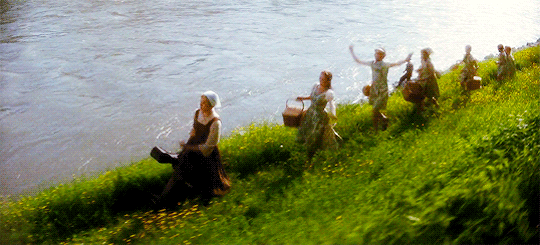
‘The Sound of Music’ (1965)
Length of film: 174 minutes
How much is it on eBay? $4.29
Where does the first tape end? Maria (Julie Andrews) realizes she must leave the abbey and let Captain von Trapp (Christopher Plummer) know how she feels about him. Meanwhile, von Trapp is spending time with his kids.
Final line of dialogue on the first tape: Captain von Trapp tells his frighteningly blond, smiling children, “Since you’ve obviously stuffed yourselves full of thousands of delicious berries, you can’t be hungry anymore, so I’ll just have to simply tell Frau Schmidt to, uh, skip your dinner.”
First line of dialogue on the second tape: “It’s all your fault — we should have told him the truth!” That’s what Kurt (Duane Chase) yells at Friedrich (Nicholas Hammond) about the whole berry fiasco
How jarring is it when the first tape ends? Meh. It’s funny to think of all the first-time Sound of Music viewers breathlessly switching from one tape to the other to find out how the infamous Berry Incident resolved itself.
Which tape is better? The first one. There are two very different stories being told on this double-VHS movie. The first half of The Sound of Music is a swell sing-along, adorable family film and chaste romance. The second half has Nazis. If the movie’s rather anodyne treatment of the Third Reich has always felt a little off-putting, the first tape takes away that issue: Instead, The Sound of Music just becomes a film about a singing nun, a gruff captain and some creepily cute kids.
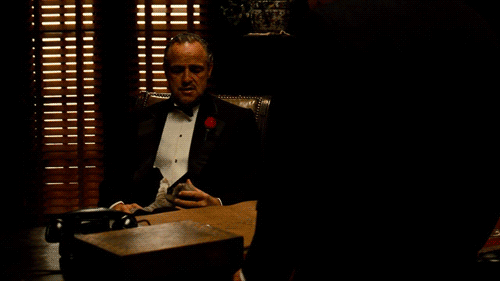
‘The Godfather’ (1972)
Length of film: 175 minutes
How much is it on eBay? $4.93
Where does the first tape end? Sonny (James Caan) finds out over the phone that his sister Connie (Talia Shire) has been abused by her husband Carlo (Gianni Russo).
Final line of dialogue on the first tape: As Sonny runs out the door, someone yells, “Sonny!”
First line of dialogue on the second tape: Sonny barks, “Open the goddamn gate — get off your ass,” as he prepares to leave the Corleone compound.
How jarring is it when the first tape ends? Slightly. It’s such a strange place to divide The Godfather, right before Sonny’s execution-style murder at the tollbooth, which is far more of an emotional wallop than the way the first tape ends now. (Possible explanation: The actual end of the scene ends with a dissolve, which might have made for too awkward a transition between tapes?)
Which tape is better? The second one. How do you decide between two halves of such a terrific movie? The slight nod goes to the second tape because it represents the culmination of everything The Godfather has been building up to: the fall of the patriarch (Marlon Brando), the rise of a reluctant son (Al Pacino) and the profound shifting of the landscape of the East Coast criminal underworld. At the time, Brando got most of the attention because of his mush-mouthed, larger-than-life performance as Don Corleone, but this is Pacino’s movie and he dominates the second half, delivering one of the finest portrayals of an honorable man seduced by his family’s dark destiny.
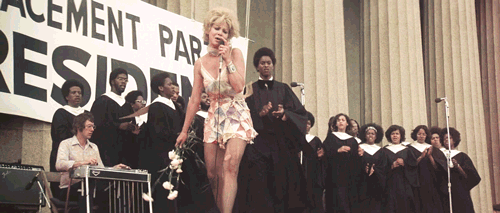
‘Nashville’ (1975)
Length of film: 160 minutes
How much is it on eBay? $9.99
Where does the first tape end? Linnea (Lily Tomlin) sits alone at the club, ordering a drink, feeling rejected after Keith Carradine’s charismatic singer Tom Frank has seemingly brushed her off.
Final line of dialogue on the first tape: “Would you put it in a wine glass, please?” Linnea asks the waitress. Someone off-camera tells the waitress, “Put it in a wine glass and put it on my bill, alright?”
First line of dialogue on the second tape: “…travelling in these cozy close quarters, you sorta have to camp in one room.” (The daffy BBC reporter Opal, played by Geraldine Chaplin, is in the middle of a conversation with the married folk duo played by Allan F. Nicholls and Cristina Raines.)
How jarring is it when the first tape ends? Extremely. Nashville unceremoniously cuts off in the middle of an extended sequence in a club that involves several different principal characters.
Which tape is better? The first one. Director Robert Altman’s kaleidoscope of life circling around Nashville has so many characters that the film more than justifies its length. (Although, these days, your typical Hollywood blockbuster is almost the length of Nashville.) The first tape establishes this world and its inhabitants — everyone from politicians to singers to celebrities (Elliott Gould and Julie Christie provide brief cameos as themselves) — while the second tape resolves the central conflicts. On a dramatic level, the second tape is a little stronger, Altman wrapping everything up in a tragic and weirdly inspiring ending that hits at some fundamental truths about this crazy, beautiful country of ours. But the utterly maddening thing about the two-tape version of Nashville is that the first tape is two hours while the second is a mere 40 minutes. Was anybody overseeing this transfer? The first tape simply has more Nashville goodness to go around.
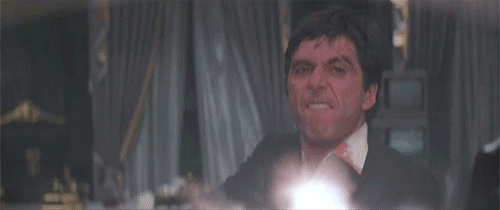
‘Scarface’ (1983)
Length of film: 170 minutes
How much is it on eBay? $3.49
Where does the first tape end? Egomaniacal Tony Montana (Al Pacino) is sitting alone in his massive indoor hot tub, the camera pulling away as he’s just alienated his best friend Manny (Steven Bauer) and his wife Elvira (Michelle Pfeiffer).
Final line of dialogue on the first tape: Tony mumbles to himself, “I don’t need him. I don’t need her. Fuck it, I don’t need nobody.”
How jarring is it when the first tape ends? Not at all. The first tape of Scarface ends at the intermission that was included during the theatrical release. It’s a perfect bridge before everything starts going pear-shaped in Tony’s life.
Which tape is better? The second one. This mammoth rise-and-fall tale about a lowlife criminal who becomes a drug kingpin is utterly ridiculous in its over-the-top excess. So you’ll want to focus on the second tape, where Pacino really does go bat-shit crazy. All your favorite lines are here — “Say hello to my lil’ friend!” — and the man’s grand plummet from power is even more satisfying if, deep down, you enjoy hate-watching one of our greatest actor’s most shamelessly hammy turns.
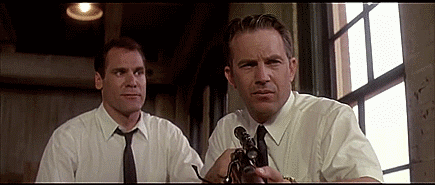
‘JFK’ (1991)
Length of film: 188 minutes
How much is it on eBay? $4.93
Where does the first tape end? New Orleans businessman Clay Shaw (Tommy Lee Jones) is being arrested for conspiring to kill President John F. Kennedy.
Final line of dialogue on the first tape: The cops ask Shaw if he uses any aliases. “Clay Bertrand,” he admits.
First line of dialogue on the second tape: An offscreen voice asks, “Mr. Clark, are you aware of the charges filed by District Attorney Garrison?”
How jarring is it when the first tape ends? Very. The VHS version actually cuts off in the middle of a scene that segues from Shaw’s arrest to a montage of its aftereffects in the press as Jim Garrison (Kevin Costner) faces more and more backlash. It’s an irritating and disorienting shift.
Which tape is better? The second one. First off, avoid JFK’s bloated “director’s cut” version at all costs. With that out of the way, the theatrical edition’s second tape concentrates on the court case, which contains some of the best filmmaking Stone ever did and the best acting of Costner’s life. Just about none of the conspiracy theories floated by JFK hold water anymore, but that doesn’t matter: Stone’s anger at a government hijacked by war-mad generals has aged far better than his rabid paranoia.
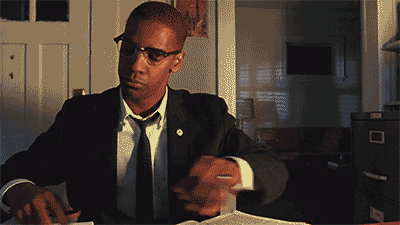
‘Malcolm X’ (1992)
Length of film: 200 minutes
How much is it on eBay? $0.99
Where does the first tape end? Malcolm X (Denzel Washington) is introduced to Betty Shabazz (Angela Bassett), and there’s an immediate (but unspoken) spark between them.
Final line of dialogue on the first tape: After Betty Shabazz excuses herself, Brother Baines (Albert Hall) turns to Malcolm and admires, “She’s interesting.”
First line of dialogue on the second tape: Betty tells Malcolm in a separate scene, “So, Brother Minister, I was hoping that you would come and speak to my class.”
How jarring is it when the first tape ends? Not too jarring. The tapes are neatly divided into the pre-Betty and post-Betty parts of Malcolm X’s life.
Which tape is better? The second one. The truth is, you really do need to watch both halves in order to understand how far the man born Malcolm Little had to grow in order to become the influential, tragically slain hero we know now. But Spike Lee’s warts-and-all portrayal of Malcolm X, starring a never-better Washington, has a growing power that comes to a head on the second tape, as we watch this conflicted, complicated leader rise to greatness, only to have his life cut short by an assassin. (Plus, Bassett’s in the second half more.)
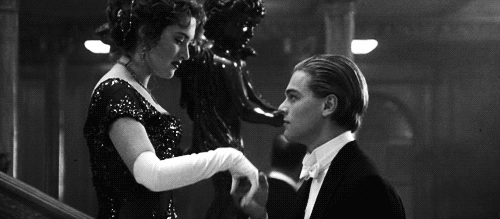
‘Titanic’ (1997)
Length of film: 195 minutes
How much is it on eBay? $1.40
Where does the first tape end? Jack (Leonardo DiCaprio) has been arrested for stealing — a crime he didn’t commit — just as the boat’s officers discover that the Titanic is doomed.
Final line of dialogue on the first tape: Realizing that the Titanic is destined to sink, the captain (Bernard Hill) grimly informs the head of the shipping company, “Well, I believe you may get your headlines, Mr. Ismay.”
First line of dialogue on the second tape: Furious at his fiancée Rose (Kate Winslet) for buddying up to Jack, Cal (Billy Zane) slaps her across the face, saying, “Oh, it is a little slut, isn’t it?”
How jarring is it when the first tape ends? Not at all. It’s a perfect break from Tape One to Tape Two, ending on a note of terrible foreboding that, oh crap, this boat’s goin’ down!
Which tape is better? The second one. Sure, Jack and Rose are a sweet couple, but nobody cares about their long, drawn-out courtship. The second, shorter VHS tape is where all the real excitement happens: Our lovers are separated, the ship hits the iceberg and everything goes to hell as the Titanic plummets into the icy depths. Plus, that ending still gets us. (No, not the present-day Rose part. All the present-day stuff is terrible.)
Tim Grierson is one-half of The New Republic’s film column Grierson and Leitch. He is also a frequent contributor to Rolling Stone and Vulture as well as the author of six books, including a biography of Public Enemy.
